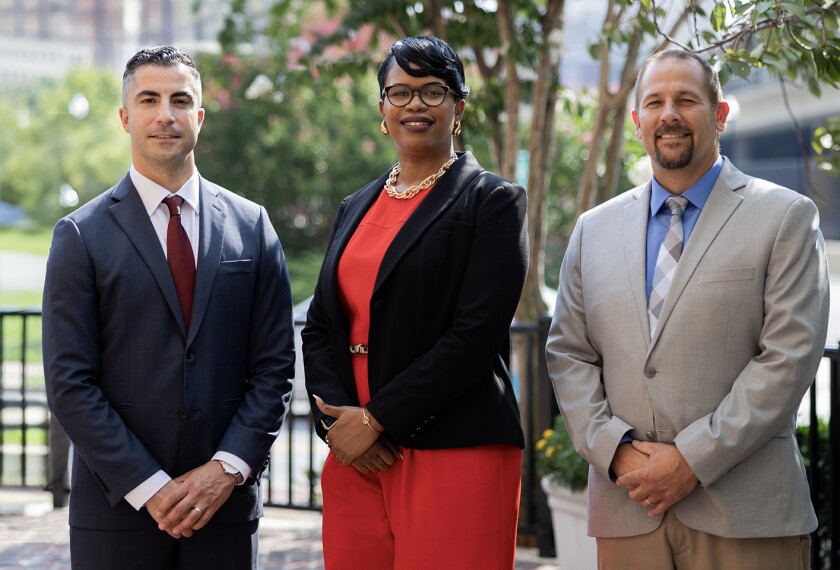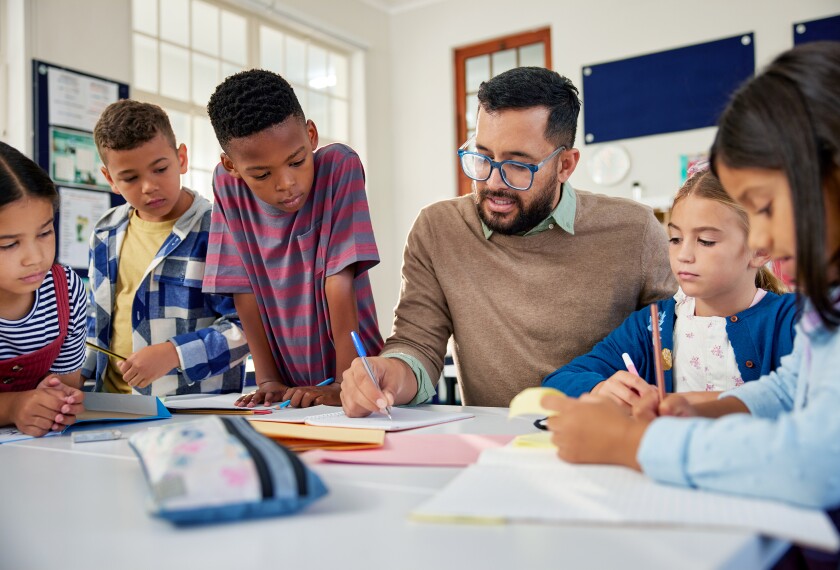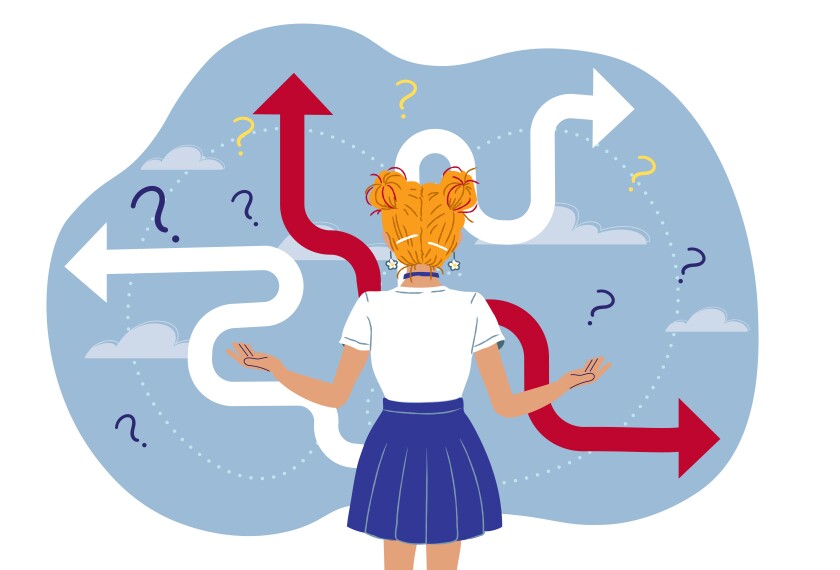Elementary school students are famously fascinated by the scatological.
Instead of pooh-poohing their interest, Dyane Smokorowski, the coordinator of digital literacy for the Wichita, Kan., public schools., has used the subject matter to hook students into topics related to science, technology, engineering, and math. She’s even helped enlist scientists who study animal feces to talk to students on Zoom—or in person.
Yes, they’re encouraged to bring samples.
“Students get to see what one animal’s scat is like versus another. Kids are fascinated,” Smokorowski said. The show-and-tell can lead to broader questions like how do biologists study scat in order to know the animal’s health? And what’s the science that goes with that?
Connecting with STEM professionals on everything from how artificial intelligence works to health sciences can give students a taste of how STEM is used in the real world, experts and educators say.
In addition to making STEM curriculum more engaging, the practice can help answer a perennial student question: “When will I need to know this?” said Christine Royce, a professor of science education at Shippensburg University in Pennsylvania and a past president of the National Science Teaching Association.
Partner with a ‘geek’ to get kids motivated to learn
To help teachers figure out how to facilitate encounters with STEM professionals, a cadre of state teachers of the year—have put together a series of guides, laying out the best practices for virtual or in-person class interviews with STEM professionals. There are separate guides for elementary, middle, and high school.
The guides grew out of the Voya Foundation’s National STEM Fellowship, established in 2017, as a way for state teachers of the year with STEM expertise to mentor early-career educators on excellent STEM teaching practices.
The guides explain “how you can bring in an engineer geek or somebody else and here’s how you can partner effectively,” said Michelle Pearson, a social studies and geography teacher at Century Middle School in the Adams 12 school district, in Thornton, Colo. “You can always bring a speaker in, but it’s never as effective if you don’t engage the students and engage the speaker ahead of time. And that takes training on all sides.”
Just because an expert has in-depth knowledge of, say, marine biology, doesn’t mean that they know how to talk 1st graders.
“You can be a fantastic business professional but be scared to death of littles,” Pearson said.
The strategy can be a small step toward filling the gaps in teachers’ expertise in high-interest STEM fields.
For instance, more than a third of school and district leaders surveyed by the EdWeek Research Center earlier this year said they wanted to offer courses in artificial intelligence but weren’t able to find teachers with the necessary background. School districts have had similar problems offering coursework in areas like cybersecurity, marine science, and genetics.
Choose STEM experts based on topics students are already interested in
Smokorowski encourages teachers in her district, and those she has mentored through the National Teacher of the Year program, to choose experts based on what students are already interested in.
“Someone is passionate about ants. There’s someone passionate about bees. There’s someone passionate about weather,” Smokorowski said.
Bringing in STEM professionals with a wide variety of racial, ethnic, and gender backgrounds can be especially powerful for students, Smokorowski added.
“Our students need people who look like them being represented in STEM fields, so they see a path that this is something they can do as well,” she said. Teachers may want to prioritize finding STEM experts who are “people of color, people [living in] rural areas, speakers of different languages,” she said.
No matter the grade level, Pearson suggests starting the process by asking students: “Who do you want to hear from? Who do you want to learn from? We let them dream,” she said. Teachers can then take the list students have generated and start trying to find an expert who fits the bill.
That can mean using a variety of strategies, starting with making cold calls or working with local government or community organizations to find leads. Smokorowski found a bug expert through social media.
Pearson has also taught her students how to write a professional email asking a particular STEM expert to speak in class. “We let the kids reach out,” she said. They typically “get a better response than teachers.”
Another resource for finding STEM professionals: Skype a Scientist, which allows classrooms to connect virtually with an expert specializing in climate change, genetics, vaccines, and other STEM topics. Teachers can specify what they are looking for or browse a list of scientists. Educators can even search for scientists with particular characteristics—including race and sexual orientation—or find scientists who are first-generation college graduates.
Students should brainstorm questions in advance of the expert’s visit
Once a teacher has identified an expert and that person has agreed to appear in class, Pearson recommends doing a “questioning protocol” with students to make sure they get the most out of the visit.
Students should brainstorm and evaluate their questions ahead of time, Pearson said. “We look at that big, long list of questions, then we label them,” she said. “Which ones are open- ended? Which ones are closed-ended? Where are you gonna get the best answer for your research?”
The teacher should share the final list of questions with the expert and give them a sense of the students they’ll be talking to, including their level of background knowledge on the topic the speaker will address.
The teacher and expert should also decide in advance what form the presentation will take. Will there be PowerPoint slides? A short film? Virtual tour? They should also identify any vocabulary words students will need to understand ahead of time, teachers who have used the strategy suggest.
Ideally, “there are no surprises” for the teacher or expert, Pearson said.
Teachers doing a virtual visit with a middle or high school class may want to have their students watch the presentation on their individual devices. That way, they can post questions in an online, moderated chat, making the experience much more interactive, Smokorowski suggested.
She also encourages guests to use as many visuals as possible, especially when they are joining remotely.
Some have used their devices to give students virtual tours of their labs.
Others have brought “artifacts”—equipment they regularly use on the job—and asked students to guess what it’s for.
And the bug scientist Smokorowski found online, who has a television program overseas, started his Zoom with 2nd graders by introducing students to the insects he works with: including praying mantises and flying beetles. They loved watching him chase the critters around his office, she said.
After the visit, teachers should give students a chance to reflect on what they learned, perhaps through a class discussion or writing in journals. Teachers can share those reflections with the expert, to make another potential encounter—with the same students, or a different group—smoother.
Pearson—who has used the strategy for years—has seen some of her former students go into STEM fields that they were exposed to by experts she and other educators brought into their classes.
That’s a testament to the power of the strategy, Smokorowski said. When schools “find those people to talk to our students, their passion becomes contagious.”
Disclaimer: The copyright of this article belongs to the original author. Reposting this article is solely for the purpose of information dissemination and does not constitute any investment advice. If there is any infringement, please contact us immediately. We will make corrections or deletions as necessary. Thank you.







